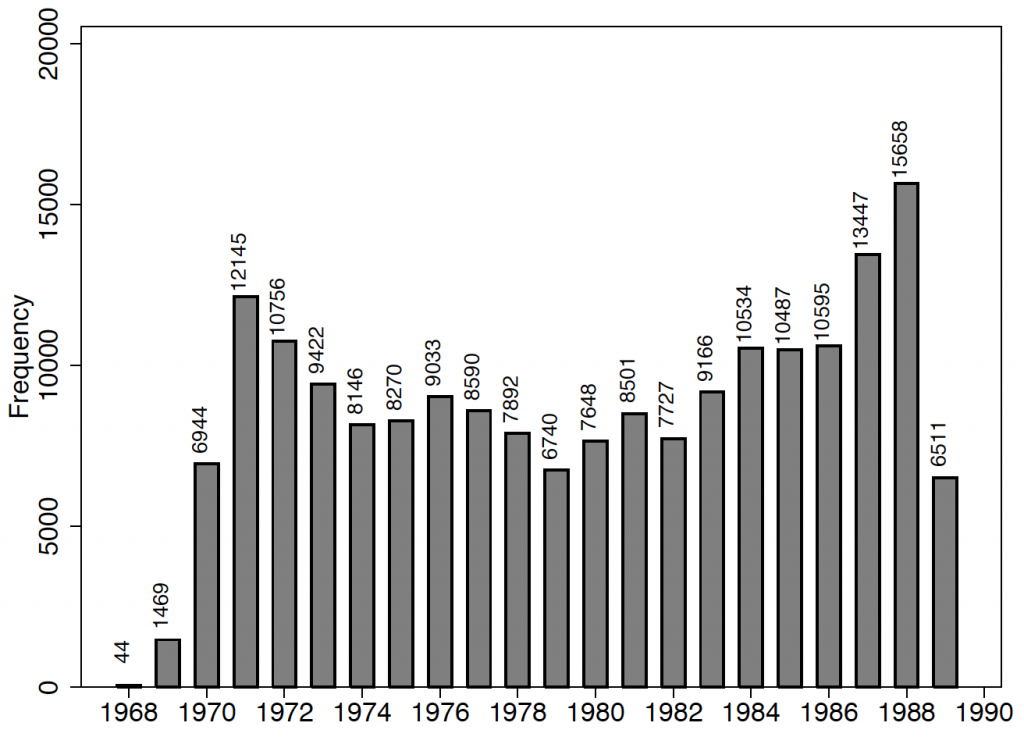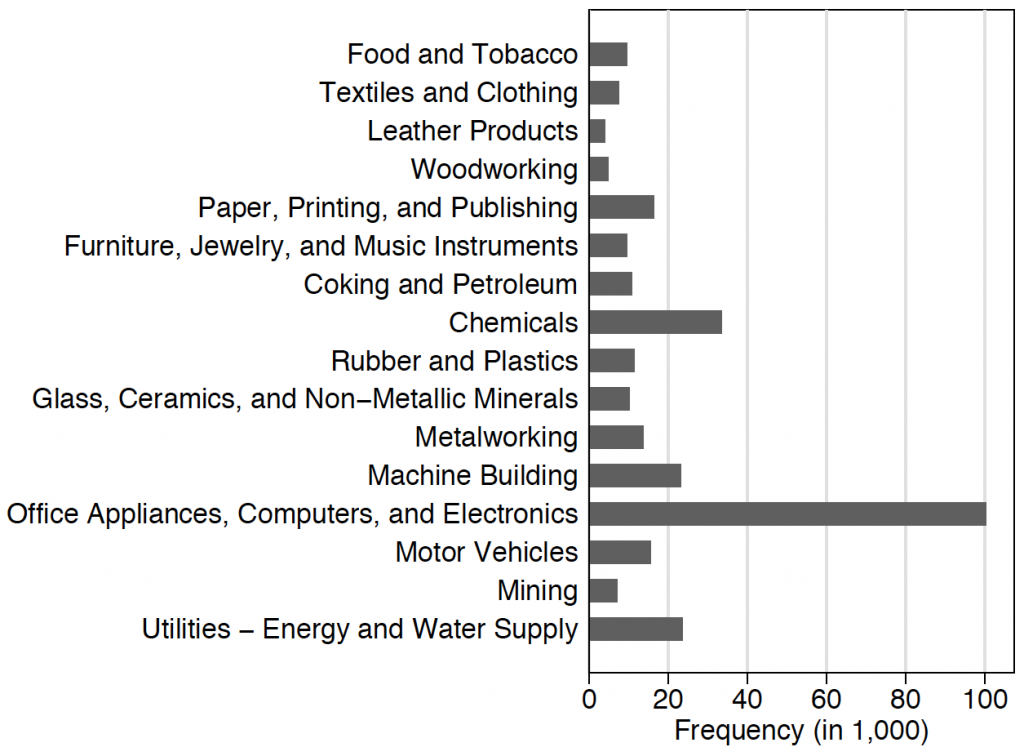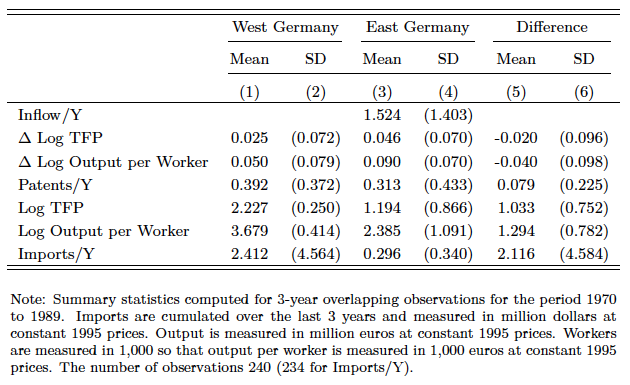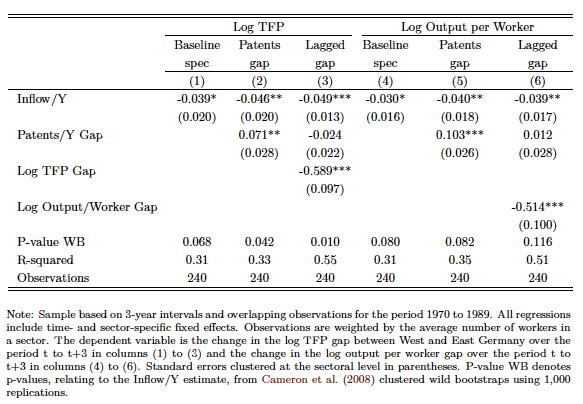What was the impact of industrial espionage by East Germany during the Cold War on its economy? In their BSE Working Paper (No. 982) “Industrial Espionage and Productivity” Albrecht Glitz and Eric Meyersson document the extent of industrial espionage activities by the East German foreign intelligence services in the West during the Cold War and analyze their impact on East Germany’s productivity and technological progress.
Industrial espionage has a long history!
Throughout history, industrial espionage has remained an important channel for technology transfer, especially for states that are subject to sanctions or lagging behind the global technological frontier. Glitz and Meyersson note that possibly the earliest recorded incidence of state-sponsored industrial espionage occurred in the 6th century AD when two Nestorian monks successfully smuggled silkworm eggs from China into the Byzantine Empire. As a result, Byzantine silk became one of the Empire’s most profitable commodities, transforming several cities into major textile centers. In the present day, with cyber espionage proliferating, intellectual property disputes between countries and companies alike have become a major issue.
Despite the rich history of illicit technology transfer and its continuing contemporary importance, there have been few attempts to quantify the costs and benefits of industrial espionage. In this paper, Glitz and Meyersson study the relationship between state-sponsored industrial espionage and technological progress, focusing on the effect of industrial espionage on East German industrial productivity during the Cold War period 1970 to 1989.
Classified data of the East German Communist regime
Glitz and Meyersson base their empirical work on a database called SIRA which comprises the entire stock of information East German foreign intelligence sources gathered abroad during the period 1970 to 1989. This unique database includes detailed information on 189,725 individual pieces of information received by the East German Ministry for State Security (Stasi), including their precise date of receipt, the registration numbers and code names of their sources, and a list of keywords describing each item’s content. Figure 1 below shows the annual inflow of information collected over the period analyzed.
Using the keywords associated with each piece of information, the authors classify the information with respect to the industry sector(s) they pertain to. The resulting sectoral distribution of information is shown in Figure 2. As easily discernible in the figure, the “Office Appliances, Computers, and Electronics” sector was the most targeted sector by East German espionage activities.


In addition to the SIRA data, the authors use industry level data for West and East Germany compiled by Heske (2013), who undertook the arduous task of converting primary data from unpublished internal documents of the East German Statistical Office into a concordant system of national accounts. Table 1 below summarizes the productivity metrics of the two countries for the period under consideration.

Did it pay off?
The authors make use of a number of econometric techniques to test their hypothesis. The main results are summarized in Table 2 below. The estimated coefficient in column (3) suggests an economically meaningful effect of industrial espionage on relative productivity growth, with a one standard deviation increase of 1.4 in the information flow per 1 million euros of output reducing the gap in log TFP between West and East Germany by 6.9 percentage points. The magnitude and sign of the estimated impact of industrial espionage remain stable when controlling for additional drivers of TFP growth, such as R&D investments and international trade. Specifications using log output per worker rather than backed out measures of sectoral TFP lead to similar results.
Further analysis shows that most of the positive effect of industrial espionage on East German productivity growth is actually driven by only a few high quality pieces of information, and that industrial espionage was particularly effective in those sectors in which East Germany was technologically not too far behind the West. Counterfactual simulations show that the average TFP gap between West and East Germany would have been 9.5% bigger in the absence of industrial espionage by the East.

Conclusion
Glitz and Meyersson present the first systematic evaluation of the economic returns to state-sponsored industrial espionage. Their estimates show that the returns to industrial espionage were substantial, enabling East Germany’s economy, at least to some extent, to keep up with productivity growth in the West.
The authors note that there are a few issues that might limit the external validity of the findings such as the discrepancy between East Germany’s planned economy and today’s market-based economies, the extensive trade embargoes against the entire communist bloc at the time, and the fundamental shift in the technology of spying in recent decades. However, the processes through which newly acquired information is translated into productivity growth today may not differ much from the processes in place in East Germany at the time of the Cold War, especially in countries characterized by strong centralized governments such as China and Russia. The main insights from this study are thus relevant for modern times as well.


